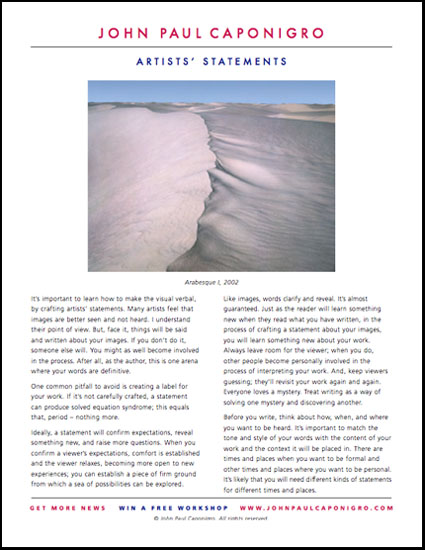Writing Artist’s Statements

It’s important to learn how to make the visual verbal, by crafting artist’s statements. Many artists feel that images are better seen and not heard. I understand their point of view. But, face it, things will be said and written about your images. If you don’t do it, someone else will. You might as well become involved in the process. After all, as the author, this is one arena where your words are definitive.
You don’t have to be a professional writer to write. Just write. Write like you speak. Write with your voice.
Like making images, writing is a process, a process of making thoughts and feelings clearer. Often, you don’t know what shape the final product will take, until you finish.
At first, I resisted writing about my images. Now, I find the process so valuable that I’ve made it a part of my artistic process. Every time a new body of work arises, I write. When I’m ready to release a book of the work, I write again. As a result of writing, I gain a better understanding of the work I did, the work I’m doing, and the work I’m going to do. So do the people who see my images, surprisingly, even if they don’t read what I write.
This is an excerpt from a longer essay Artists’ Statements.
Download it here.
Read my artist’s statements here.
Learn more in my Fine Art Digital Printing Workshops.


